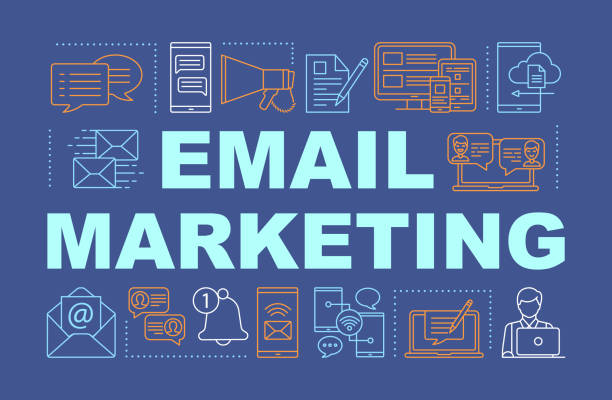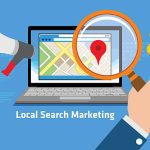Email marketing remains one of the most effective tools for e-commerce businesses to drive sales, nurture customer relationships, and boost brand loyalty. With a well-planned email strategy, you can increase conversions, reduce cart abandonment, and keep customers engaged with your brand.
Unlike social media, where algorithms control reach, email marketing gives you direct access to your audience and the sole right to own your list without potential threat, making it a powerful asset for e-commerce growth.
However, success in email marketing requires more than just sending promotional messages. To maximize its potential, you need to craft compelling content, segment your audience, and use automation to deliver the right message at the right time. This guide will explore the best practices and strategies to help you use email marketing effectively to groom your audience and to increase your e-commerce business odd of success.
Table of Contents
Best Email Marketing Practices That Will Boost Conversions
1. Build and Grow Your Email List:
Your email marketing success starts with having a strong, engaged list of subscribers. It is important to grow your list organically rather than buying email lists, which can harm your brand reputation and result in low engagement rates.
Encourage website visitors to subscribe by offering incentives such as discounts, exclusive deals, or free resources. Use pop-ups, sign-up forms, and exit-intent offers to capture email addresses. Additionally, leverage social media and paid ads to promote your email list and attract more subscribers.
How to Grow Your Email List:
• Offer Lead Magnets: Provide discounts (e.g., “Get 10% Off Your First Purchase”) in exchange for email sign-ups.
• Use Popups & Signup Forms: Add exit-intent popups and embedded signup forms on your website.
• Leverage Social Media: Promote email sign-ups on Instagram, Facebook, and Twitter.
• Run Giveaways and Contests: Encourage users to subscribe for exclusive deals and prizes.
2. Segment Your Email List for Personalization:
Not all customers are the same, so sending the same email to everyone may not yield the best results. Email segmentation allows you to divide your audience into different groups based on their preferences, behaviors, and purchase history.
For example, you can create segments for first-time buyers, repeat customers, and inactive subscribers. Sending targeted and relevant emails to each group increases engagement and improves conversion rates. Personalization, such as using the recipient’s name or recommending products based on past purchases, also enhances the customer experience.
Segmenting Your Email List:
• Segmentation allows you to send personalized emails based on customer behavior.
• New Subscribers: Welcome series and introductory offers.
• Repeat Customers: Exclusive deals and loyalty rewards.
• Abandoned Cart Users: Reminder emails to complete their purchase.
• Inactive Customers: Re-engagement campaigns with special offers.
3. Use Automated Email Sequences:
Automation helps streamline your email marketing efforts and ensures timely communication with your audience. Automated email sequences can be set up for different customer interactions, such as welcome emails, abandoned cart reminders, and post-purchase follow-ups.
A well-structured welcome series introduces new subscribers to your brand, while abandoned cart emails can recover lost sales by reminding customers of items left in their cart. Similarly, post-purchase emails can include order confirmations, product recommendations, and requests for reviews to keep customers engaged.
a) Welcome Email Series:
• Sent immediately after a user signs up.
• Introduce your brand story, best-selling products, and unique value.
• Offer an exclusive discount (e.g., “Here’s 15% Off Your First Purchase!”).
b) Abandoned Cart Emails:
• Remind shoppers to complete their purchase.
• Include a strong CTA, product image, and urgency (e.g., “Only a few left in stock!”).
• Offer a small discount or free shipping to encourage checkout.
c) Product Recommendation Emails:
•Send personalized product suggestions based on browsing history.
• Use AI-driven tools like Klaviyo or Omnisend for data-driven recommendations.
d) Order Confirmation & Shipping Updates:
• Keep customers informed about their order status, tracking details, and estimated delivery.
• Include upsell or cross-sell offers (e.g., “Complete Your Look – Get 10% Off Matching Accessories”).
e) Win-Back Emails for Inactive Customers:
• Send a “We Miss You!” email to customers who haven’t purchased in a while.
• Offer a special discount or gift to encourage re-engagement.
Automate Email Campaigns with Tools Like:
• Klaviyo (best for e-commerce automation).
• Mailchimp (user-friendly for beginners).
• Omnisend (great for multi-channel marketing).
• ActiveCampaign (advanced automation features).
4. Craft Compelling Email Content and Subject Lines:
Your email content should be engaging, informative, and visually appealing. Start with a strong subject line that grabs attention and encourages recipients to open the email. Keep your message concise and include a clear call-to-action (CTA) that directs customers to your website.
Use high-quality images, interactive elements, and mobile-friendly designs to enhance readability. A mix of promotional emails, educational content, and personalized product recommendations ensures that subscribers stay interested without feeling overwhelmed by sales pitches.
Best Practices for Subject Lines:
• Keep it short and compelling (under 50 characters).
• Create urgency (e.g. “Hurry! 24 Hours Left for 20% Off!”).
• Personalize it (“Jay, Your Exclusive Deal is Here!”).
• Use emojis sparingly to attract attention.
Ways to Personalize Emails:
• Use the recipient’s name in the subject line and greeting.
• Recommend products based on their past purchases.
• Send emails based on user behavior (e.g. abandoned carts, recent searches).
Email Content Tips:
• Start with a strong hook to capture interest.
• Keep paragraphs short (3-4 sentences max).
• Use bullet points for easy reading.
• Add a clear Call-to-Action (CTA) (e.g. “Shop Now”).
5. Optimize for Mobile and Deliverability:
A large percentage of users check their emails on mobile devices, so ensuring your emails are mobile-friendly is necessary. Use responsive email templates, short paragraphs, and clear CTA buttons to improve readability and user experience.
To enhance email deliverability, avoid spammy subject lines, use a recognizable sender name, and maintain a clean email list by removing inactive subscribers. Proper email authentication such as SPF(Sender Policy Framework), DKIM(DomainKeys Identified Mail), and DMARC(Domain-based Message Authentication, Reporting, and Conformance) also helps prevent your emails from being marked as spam.
How to Optimize for Mobile:
• Use a responsive email template that adjusts to different screens.
• Keep your email width under 600px for better readability.
• Use larger fonts (14px+ for body text, 22px+ for headers).
• Have a clear, tappable CTA button.
6. Leverage Customer Data for Retargeting and Upselling:
Email marketing is an excellent way to retarget potential customers and encourage repeat purchases. When you analyze customer data, it will help you send personalized product recommendations, limited-time offers, and loyalty rewards to incentivize buying.
Upselling and cross-selling emails can introduce customers to complementary products or upgrades based on their purchase history. For example, if a customer buys a laptop, sending an email recommending accessories like a laptop bag or external keyboard can increase their cart value.
7. Monitor Performance and A/B Test Your Emails:
Tracking email performance helps you identify what works and what needs improvement. Key metrics to monitor include open rates, click-through rates (CTR), conversion rates, and unsubscribe rates.
A/B testing allows you to experiment with different subject lines, email formats, CTA buttons, and sending times to determine the most effective approach. Continuously optimizing your email campaigns based on data insights will lead to better engagement and increased revenue.
What to A/B Test?
• Subject Lines (e.g., “Limited-Time Offer” vs. “Exclusive Deal Just for You”).
• CTA Placement (button at the top vs. bottom).
• Email Design (plain text vs. visual-heavy).
• Sending Time (morning vs. evening).
Key Metrics to Track:
• Open Rate (goal: 20% or higher).
• Click-Through Rate (CTR) (goal: 2-5%).
• Conversion Rate (how many people make a purchase).
• Unsubscribe Rate (keep it below 0.5%).
Conclusion
Email marketing is a powerful tool for e-commerce success when executed correctly. When you follow expert tips like growing and segmenting your email list, automating key processes, and crafting engaging content, you can drive more traffic and conversions for your online store maximizing the benefits of email marketing in the process.
Personalization, mobile optimization, and data-driven strategies ensure that your emails resonate with your audience and encourage long-term customer relationships.
As the e-commerce landscape evolves, staying updated with the latest email marketing trends and continuously optimizing your campaigns will help you maintain a competitive edge. With a well-structured email marketing strategy, your business can build stronger connections with customers and achieve sustainable growth.





